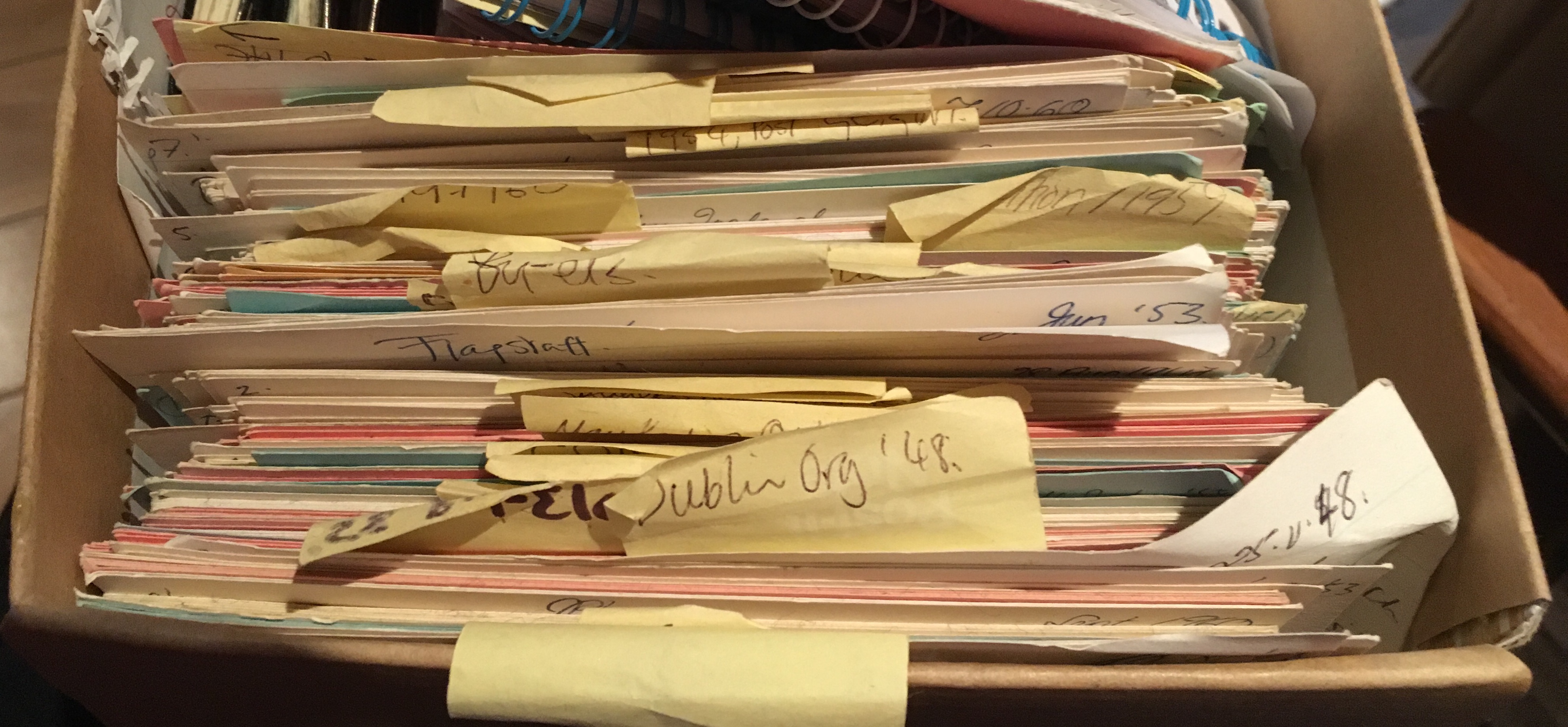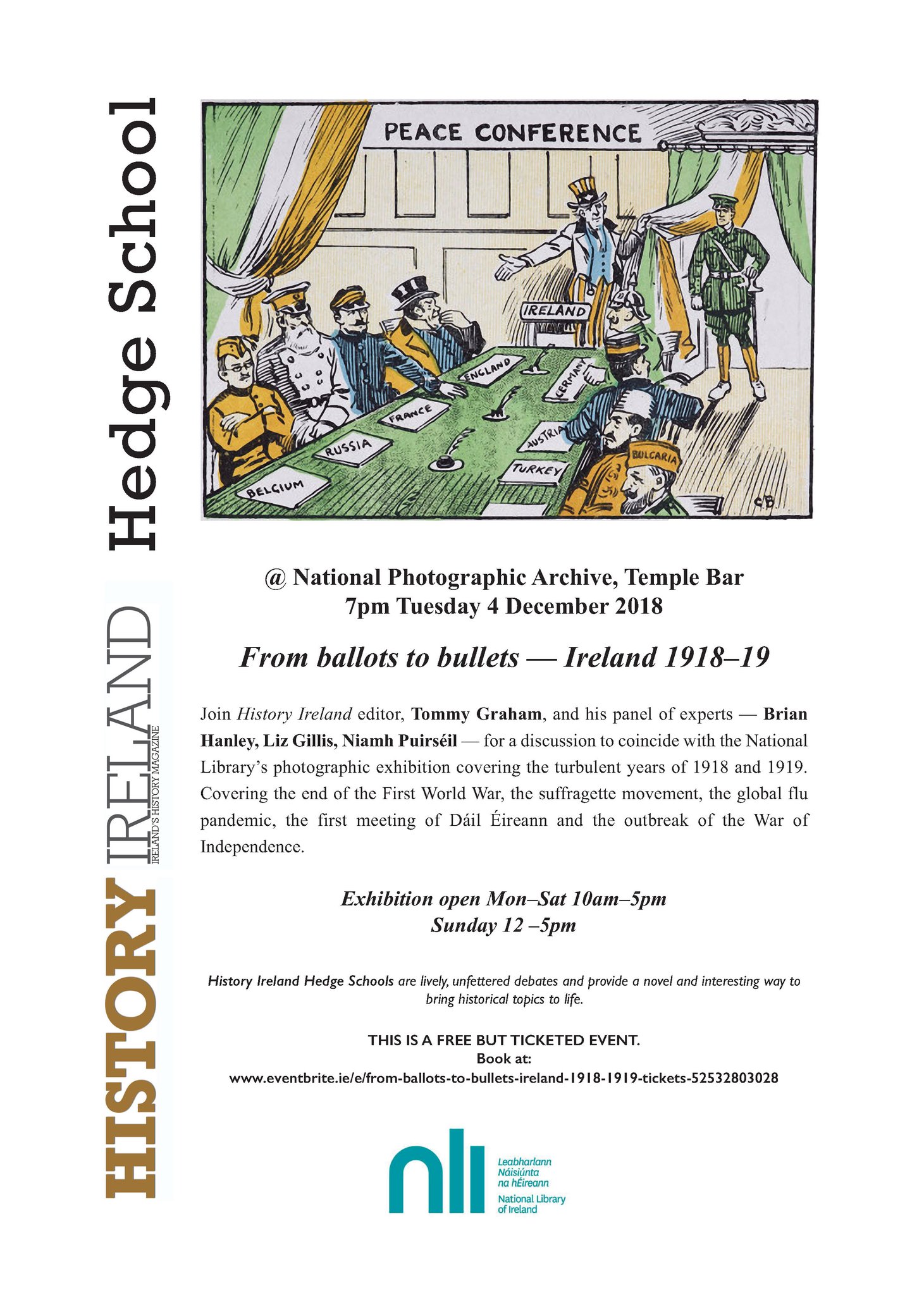I was invited to speak at a conference on Law, Revolution and Sovereignty: Reflections on the Legal Legacy of the 1916 Rising & Declaration of Independence held by the School of Law in NUI Galway in 2016. I was a political historian among legal scholars so the paper had a legal scholarly name but the paper focused on the area of the values set out in the proclamation and their politics. In other words, the as the title on the programme puts it 1919 as root of title, a somewhat legal title for a paper with no law. It is based on a chapter in Foundation Stone: Notes Towards a Constitution for a 21st-Century Republic edited by Theo Dorgan.
The year 1919 is a pivotal date in Irish history and is effectively the constitutional foundation stone of the modern Irish state. Strictly speaking, the state dates itself from 1922 with the foundation of the Irish Free State under the terms of the Anglo-Irish Treaty but, I would suggest, outside of particular partisan circles, there is not really a great deal of affection for that particular date, which represents a bitterly contested compromise wrested from Britain.
1919 is not officially a part of the history of the actual state, then, but it has a semi-official status, in the sense that we still count our parliaments from the one elected at the 1918 general election, and the record of our Houses of the Oireachtas begins with the first public meeting of the First Dáil in the Mansion House on 21 January 1919. It’s not something we do with our governments but it is, I think, the only aspect of the pre-1922 independence movement that remains a part of the architecture of the modern state.
The First Dáil was a non-violent revolutionary act, which had its basis in a mandate from the Irish people. As Michael Laffan pointed out ‘in two quite different respects the meeting of the First Dáil was an act of great symbolic importance. Not only did it inaugurate the democratic and constitutional history of independent Ireland, but it also represented a synthesis of two different traditions within Irish nationalism’, by combining the military and political traditions within Irish nationalism and was ‘the product of co-operation between soldiers and politicians’ which had begun in the period following the 1916 Rising.[1] It also dramatically marked the end of a different political tradition in Ireland, with the Irish Parliamentary Party (IPP) having been effectively wiped out in the election which preceded it. In a sense then, it marks the continuity of the Irish parliamentary tradition, but with an entirely new cast of actors.
It’s not necessary to rehearse the origins of the First Dáil except to note a couple of things. For one thing, it is a direct consequence of the events of Easter Week and the re-organisation of the iteration of Sinn Féin that grew out of it and which was, at that point, more of a rallying cry than a political party in any conventional sense. Labour, which had been founded only a few years earlier, famously did not contest the election, so that the contest was a straight fight between Sinn Féin and the IPP, making it, in effect a referendum on separatism.
As Frank Gallagher put it, there had been no concealment of what Sinn Féin stood for.
- That it was for Ireland a Republic the people were being asked to vote
- that those elected would not attend the British Commons but would remain in Ireland to set up a National Assembly, and
- That the assembly would assert full sovereign independence.[2]
The Sinn Féin landslide which followed saw the party take 73 of 105 seats. That they would not take their seats in Westminster was a given, despite some cynical speculation to the contrary,[3] but there was a question mark over what Sinn Féin might do next. A parliament with Sinn Féin deputies only would be problematic with so many of them in prison, but the suggestion that they convene a National Assembly, including representatives of the Labour movement and other national organisations was also difficult because this would dilute the legitimacy conferred on any parliament by co-opting unelected members. If they were going to establish a representative government, they believed that their mandate was crucial.
Tom Johnson had told a newspaper that the party was ‘willing to act as a Left-wing within the National Assembly’ and the Labour leaders were reported to have been distinctly put out at not having been invited to take part in a broader assembly, but they said nothing in public and would be placated soon enough.[4]
On 7 January, some twenty nine of the Sinn Féin MPs attended a preliminary private meeting in the Oak Room of the Mansion House of the ‘Dáil Éireann’ as the new assembly had been called. They resolved ‘that we, the republican members of the Irish constituencies, in accordance with the National Will, are empowered to call together the Dáil Éireann and proceed accordingly.’ Which they duly did, assembling at the Round Room of the Mansion House at 3.30 pm on 21 January 1919, in a room packed with ticket holders and the international press.
After a prayer read in Irish by Fr Flanagan there was a roll call of all those elected in 1918, with the refrain fé ghlas ag Gallaibh for each Sinn Féin member in prison on the day, while the Unionist and Home Rule MPs were ‘as láthair’, the Bunreacht Dala Éireann was read, in Irish only, and adopted. The Constitution of Dáil Éireann consisted of five articles and was a straightforward framework for organising the work of parliament and its ministers. Article 1 stated that ‘all legislative powers shall be vested in Dáil Éireann, composed of Deputies, elected by the Irish people form the existing Irish parliamentary constituencies’; article 2 outlined the composition of the ministry of the Dáil and the election of the president, article 3 referred to the chairman of the Dáil, Article 4 related to money and article 5 stated that the constitution was provisions and liable to alteration upon seven days’ written notice. An English language version was provided to the press on the day,[5] and later adopted when the Dáil met again on 1 April when much of the business of the day was amendments to the standing orders and to the constitution of Dáil Éireann, including a motion moved by Eamonn de Valera and seconded by Countess Markievicz that ‘Deputies shall be referred to by the names of their constituencies and that (g) No Deputy shall make a personal charge against another nor use offensive remarks about another,’[6] thus adding guidelines for civility to proceedings which had been remarkably civil up to this point and, more curiously, adopting the Westminster custom regarding names.
Brian Farrell has observed that the presentation of the constitution was ‘almost dismissive’ and did it less than justice, considering it was the ‘first fundamental law of modern Ireland [and] was to remain the basis of the Irish state until the adoption of the Irish Free State constitution in 1922.’[7] Certainly, the emphasis in the rhetoric of the proceedings of the opening session of the First Dáil is on the parliament, and the people who elected it, rather than on any government arising out of it and any structures it might have. It is interesting though, that when the Dáil met for the third time, this time with de Valera present for the first time, that the focus shifted to the structures of government and rules of the house.
But after the roll and the rules, the meeting it had before it three items of business: a declaration of independence, a message to the free nations of the world calling for recognition of Ireland’s independence and, finally, the adoption of the Democratic Programme.
The message to the free nations of the world, which was read in Irish, English and French, was an appeal for recognition of Ireland’s national status and her right to its vindication at the Paris Peace Congress but the other two documents are of more lasting relevance and are what I’m going to focus on here.
Recalling the meeting of the First Dáil some decades later in his book The Four Glorious Years, Frank Gallagher noted that ‘the Declaration of Independence, made by Dáil Éireann’ that day ‘is historically the most important document in the archives of modern Ireland.’[8]
The Declaration of Independence is just 400 words long and effectively updates the Proclamation in the context of the new national parliament.
The Declaration of Independence can be boiled down to the idea that where the ‘Irish republic was proclaimed on Easter Monday by the Irish Republican Army acting on behalf of the people,’ now the people had declared its allegiance to the Republic through a democratic vote. It roots the Republic in centuries of physical force, right up to 1916, but confirms its legitimacy with its mandate.
Frank Gallagher may have a case in saying that this Declaration of Independence is historically the most important document of modern Ireland but it has never had that status. It is largely unremarked on by scholars and, I think, almost entirely absent from the public consciousness. I doubt many people could quote a single sentence and a very quick Google search mostly brought up pages relating to the 1916 Proclamation. Perhaps it is partly a consequence of a the more formal, legalistic language of the Declaration – ‘and whereas, and whereas’ – in comparison with the more elegant or memorable Proclamation. It might be facile to suggest that the visionaries of the revolution had been executed after the Rising but nevertheless, the 1919 document lacks something of its predecessor. Looking at Declarations of Independence more broadly, we can see that it lacks the philosophical qualities that have made the American declaration stand the test of time in its public consciousness. There are no self-evident truths or rights, just an national polity albeit one ‘based upon the people’s will with equal right and equal opportunity for every citizen.’
But if the vision of the Republic is lacking from the Declaration of Independence, it can be found in the third document adopted by the Dáil on that first day, the Democratic Programme. In fewer than 600 words in the English language version, the programme laid out the principles on which the Irish Republic was to be built – those of Liberty, Equality and Justice for all – where every man and woman would give their allegiance to ‘the commonwealth’ and, in return, each citizen would receive an adequate share of the produce of the nation’s labour and where the government’s first duty would be to ensure the physical, mental and spiritual well-being of every child. The programme was not framed as a constitution, as such, but it did outline the basic ethos and civic framework on which the new state would be built. Significantly, however, the word ‘state’ is entirely absent from the text. In contrast, the 1922 Free State constitution and its 1937 successor, Bunreacht na hÉireann, both focused on drawing up the state’s legal and political infrastructure, but the notion of citizenship, and the rights and responsibilities it conferred, was wholly absent, an absence which has been reflected in the political culture of the state.
In recent years, particularly in the context of the post-2008 economic crisis and the political re-evaluation which followed (such as it was), this absence of a popular civic republicanism has been highlighted as a factor contributing to Ireland’s national malaise by various commentators. This view has much to recommend it although there is rarely (if ever) any acknowledgement of the voices which had previously called for the state to promote an active citizenship in the past but who were readily ignored by those who held political power almost from the outset. The Democratic Programme adopted by Dáil Éireann in January 1919 is probably the most pertinent example, a document which not only remains relevant today but which is significantly more progressive than anything which followed in the century since it was put before Ireland’s first independent parliament.
Before looking at the document itself though, it’s worth looking at the context in which it was written.
The genesis behind the programme was largely political and done with an eye on an international audience. The Socialist International was meeting in Berne on 3 February and two Labour men, Tom Johnson, treasurer of the Irish Labour Party and Trade Union Congress and Cathal O’Shannon, an official in the Irish Transport and General Workers Union, were planning to attend to lobby for support for Irish self-determination. Anything that which might lend the progressive or radical credentials to the new government would surely ‘strengthen the delegation’s hand in Switzerland’[9] would be advantageous. Johnson was approached to write the Dáil’s social programme, something which might serve as a consolation to Labour which had stood aside in the 1918 election and again when the membership of the assembly was not widened. There was also another consideration, though, since there were few others capable of doing the job.
Part of the problem was that ‘Sinn Féin’, that broad alliance of disparate political beliefs, had not given the issue a great deal of thought. Many of those who had been inclined towards political thinking had died in 1916 and their successors seemed, for the most part, of a less philosophical bent. Theirs was an attitude summed up in a story retold by Seán O’Faolain, about the English journalist who
Soon after 1916, plied the general secretary of Sinn Féin, Paudeen O’Keeffe, with so many insistent questions on the lines of ‘What are the practical aims of this movement?’ and got so many unsatisfactory answers that, in the end, he said in some slight exasperation: ‘Mr O’Keeffe, would you at least say what exactly you yourself want?’
At this O’Keeffe, a small, dark fiercely moustached Celt, banged his desk and roared: ‘Vingeance, bejasus!’[10]
Similarly, in his history of Sinn Féin between 1916 and 1923, Michael Laffan has observed that Sinn Féin ‘did not engage in the sort of intellectual debates which preoccupied many of their counterparts in other countries.’[11] It would be wrong to suggest that these debates did not take place at all, but within Sinn Féin people who thought in a practical way about the nature of Irish society after the revolution, people such as Liam Mellows, were in the minority and tended to be on the left. For the rest, Connolly’s idea of ‘painting the post boxes green’ did not seem too objectionable. As such another factor in Johnson being asked to write the programme was because he could and there was no one in Sinn Féin who would be equal to the job.
In early January, Johnson was approached to write the Dáil social and economic document. Johnson began his draft by quoting form the 1916 Proclamation and then from Pearse’s last major pamphlet, the Sovereign People (published 31 March 1916), in a deliberate attempt ‘to link Easter Week with the Dáil’s need for a social policy’ as well as to illustrate the influence which James Connolly had had on Pearse’s thought in later years.[12]
In Pearse’s words, the passage asserted that ‘no private right to property is good against the public right of the nation…whenever forms of productive wealth are wrongfully used…the Nation shall resume possession without compensation.’ The draft continued in a similar vein, asserting that ‘the Irish Republic shall always count wealth and prosperity by the measure of health and happiness of its citizens’ and as such, the first duty of the government of the republic would be to make provision for the physical, mental and spiritual well-being of the children. It set out how natural resources would be exploited for the good of the people and how where ‘productive wealth’ was ‘wrongfully used or withheld from use to the detriment of the Republic, there the nation shall resume possession without compensation.’ Having dealt with trade and the noting that ‘it shall be the purpose of the government to encourage the organisation of the people into trade unions and co-operative societies with a view to the control and administration of the industries by the workers engaged in the industries. Finally, it concluded that ‘the Republic will aim at the elimination of the class in society which lives upon the wealth produced by the workers of the nation but gives no useful service in return, and in the process of accomplishment will bring freedom to all who have hitherto been caught in the toils of economic servitude.’[13]
Johnson’s document, however, was far from the last word since, as Aindrias Ó Cathasaigh has noted, ‘the republicans were not minded to let the programme through on the nod.’[14] Michael Collins called a meeting of leading members of the IRB for the eve of the inaugural session of the first Dáil to consider the Democratic Programme. According to P.S. O’Hegarty, one of those present:
The ‘Democratic Programme’ gave rise to a lively debate, the preponderance of opinion being against it. It was urged that this declaration was in fact ultra vires for the Dáil, whose one and only business was to get the English out of Ireland, and that all internal and arguable questions like this should be left over until the English had actually been got out, and, on a vote, that view was upheld. Collins then said that he would suppress the ‘democratic programme’, and he did so; but, next morning, the others refused to go one without a democratic programme and the draft was handed to Seán T. O’Kelly, who finally produced what was put before the Dáil.[15]
O’Kelly’s recollection differed somewhat but as Ó Cathasaigh observes, ‘his description of how the draft was received rings true’:
a long and sometimes heated discussion. There were ideas and statements which some of the committee would not accept. The discussion lasted until well after eleven o’clock… Eventually the meeting broke up without any agreement. All notes and suggestions were thrown at me because I was chairman. I was told to draft the document myself.[16]
As Ó Cathasaigh observes, ‘O’Shannon thought that the Sinn Féin executive, with O’Kelly’s own support, overruled the IRB objections,’[17] and O’Kelly was given the task of rendering Johnson’s original document into something which the IRB would find less objectionable. O’Kelly worked through the night, cutting extensively, editing other sections but adding little of his own. He removed some of the more radical elements in the text including the elimination of the capitalist class and the confiscation of misused property and rephrasing other sections. Years later, O’Shannon went compared original draft and the final version and found that around half of the half of the Johnson draft was omitted.[18] Once O’Kelly had finished his revisions, there was a rush to have the final version typed up for the opening of the Dáil. With no time left to write an Irish translation, Piaras Béaslaí was left to do an impromptu translation, pretending to read from the English text.[19] As O’Kelly later recalled, ‘the draft of the Democratic Programme was not submitted to any committee or indeed to any individual except my wife,’[20] and Cathal O’Shannon noted that it was not until he and Johnson listened to the programme being read to the Dáil that they realised that it had been amended. But if a deal of the explicit socialism of the first draft was excised, it was not wholly eliminated and the end result did not trouble Johnson who wept with emotion as it was read out.[21]
I will just quote a couple of excerpts here:
we declare that the Nation’s sovereignty extends not only to all men and women of the Nation, but to all its material possessions, the Nation’s soil and all its resources, all the wealth and all the wealth-producing processes within the Nation, and with him we reaffirm that all right to private property must be subordinated to the public right and welfare.
We declare that we desire our country to be ruled in accordance with the principles of Liberty, Equality, and Justice for all, which alone can secure permanence of Government in the willing adhesion of the people.
We affirm the duty of every man and woman to give allegiance and service to the Commonwealth, and declare it is the duty of the Nation to assure that every citizen shall have opportunity to spend his or her strength and faculties in the service of the people. In return for willing service, we, in the name of the Republic, declare the right of every citizen to an adequate share of the produce of the Nation’s labour.
It shall be the first duty of the Government of the Republic to make provision for the physical, mental and spiritual well-being of the children, to secure that no child shall suffer hunger or cold from lack of food, clothing, or shelter, but that all shall be provided with the means and facilities requisite for their proper education and training as Citizens of a Free and Gaelic Ireland.
Even watered down, the Democratic Programme is a powerful declaration of the rights and duties of citizens and what was meant by a Republic, outside the instruments of statehood or government. The problem, however, at the time and since, however, lies in the mens rea. [joke] The Democratic Programme was adopted by the First Dáil, few members of that Dáil, if any, seem to have taken it particularly seriously and the debate has raged for decades over whether the Programme was genuine or merely opportunism.
Apart from the IRB’s opposition not merely to its content but to its being read at all. In later years, there were others on the Cumann na nGaedhael/Fine Gael side who were openly contemptuous of it. Asked about the programme fifty years later, in 1969, Ernest Blythe recalled ‘no, I never found anybody who took the slightest interest in it. The Labour Party secured the adoption of it. I don’t think anybody, practically speaking, bothered with it afterwards. It was regarded as some sort of hoisting of a flag. It wasn’t regarded as significant.’[22] Similarly, Piaras Beaslaí, who was on the Dáil preparatory committee (and who ‘read’ the Irish version to the assembly) later wrote that it was doubtful whether a majority of the members would have voted for it, without amendment, had there been any immediate prospect of putting it into force.’[23] Indeed, the first suggestions that this case the case was as early as April 1919.
On 4 April a motion pledging the assembly to ‘fair and full redistribution of vacant lands and ranches … among the uneconomic holders and landless men’ was withdrawn with the land question being given over to consideration by a committee, suggesting that any practical efforts to put the programme into practice might be unwanted.[24] The following week, when answering a question about the social policy of the government, de Valera, the president of the republic who had been in Jail when the Programme had been adopted, explained that ‘it was quite clear that the democratic programme…contemplated a situation somewhat different from that in which they actually found themselves. They had the occupation of the foreigner in their country, and while that state of affairs existed, they could not put fully into force their desires and their wishes as far as their social programme was concerned.’ Furthermore, adverting to his lack of involvement in the process ‘He had never made any promise to Labour, because, while the enemy was within their gates, the immediate question was to get possession of their country.’[25]
After 1922, when the British enemy had moved beyond the gates, the division on the Democratic Programme became more apparent. Cumman na nGaedhael’s hostility towards it was clearly evident during the debates on the 1922 constitution. Drawing on the democratic programme, Labour deputies endeavoured to have economic rights to things such as food, shelter and education in the constitution, but Kevin O’Higgins was adamant that constitutions should include only ‘fundamental rights.’ There would be no references to citizens or their rights or duties and when the debate moved to natural resources, O’Higgins accused Labour of trying to put communist doctrine into the Free State Constitution. When Tom Johnson countered that what he was suggesting was in the democratic programme, O’Higgins merely replied ‘that’s not a constitution.’
In effect, Cumman na nGaedheal, and later Fine Gael, opposed the Democratic Programme, Labour and some left republicans supported it and then there were other republicans such as Liam Lynch or de Valera, who paid it lip service, expressing the view that the democratic programme was fine, but not yet. When Fianna Fáil was founded in 1926, it listed among its seven objectives ‘to carry out the democratic programme of the First Dáil’ an aim only removed from its corú very recently.
The programme was never entirely forgotten but it enjoyed something of a revival in the mid-late 1960s when its radicalism chimed with the spirit of social and political rebellion and the fiftieth anniversary of the Easter Rising encouraged a return to the foundations of the modern state. Writing in 1969, the economist Patrick Lynch, then lecturing in UCD, noted the changes in attitude which had begun in recent years ‘when young people saw that there are individuals in all three political parties who appear to have more in common with themselves and with the Democratic Programme… than with the policies of our political parties at the last general election.’[26] Not that its appeal was limited to the new generation. Seán Lemass referred to it in several speeches during his time as Taoiseach and privately, at least, he had expressed a desire to restate its social objectives. In 1964, Michael McInerney, the Irish Times political correspondent suggested that Lemass planned to use the commemorations of the 1916 rising to ‘declare in 1966 terms the national aims as defined in the 1919 programme’ and when the Taoiseach established an All Party Committee on the Constitution that year it looked as though that might happen but ultimately, it was not to be.
The celebrations surrounding 1966 emphasised the Proclamation of the Republic not its successor from the First Dáil and by its anniversary in 1969 it merely highlighted the state’s sins of omission. When members of the Oireachtas and distinguished guests met to commemorate the fiftieth anniversary of the First Dáil’s inaugural meeting, President de Valera’s address had been interrupted with a shout. ‘The programme of the old Dáil has never been implemented. This is a mockery.’ Continuing by noting a hunger-strike in Mountjoy by a housing activist who had been imprisoned after he refused to vacate the house in Mountjoy Square where he had been squatting in with his wife and children. The interruption came not from some young hot-head but an older man in the distinguished visitors section, Joseph Clarke, a veteran of 1916, who’d fought on Mount Street bridge under de Valera’s command and the usher-in-charge of the first Dáil.
Once Lemass had retired from politics, the document’s status diminished within Fianna Fáil and became almost exclusively identified with the left where it continued to be seen as founding document of a republic that had failed to be. Beyond the republican movement (where it was regarded highly in the official and provisional wings), the left and the Labour Party especially, it fell out favour. It was generally ignored, and when it was not ignored it was derided. Writing in January 1989, Mary Holland noted how ‘the political parties achieved a new and rather depressing consensus…when they agreed, unanimously, not to commemorate the 70th anniversary of the first Dáil’ and a suggestion by a Labour senator that the upper house mark the event – highlighting the importance of the democratic programme – prompted the NUI senator, Professor John A. Murphy to declare it ‘pious codswallop’, ‘a piece of eyewash. It was mere window dressing.’ Five years later, however, the occasion was, at least marked by RTÉ in a series of Thomas Davis lectures, published as an collection edited by Brian Farrell, which emphasised the importance of 1919 as the bedrock of the modern Irish state.
Politically, no one in recent times has identified so strongly with it as President Michael D. Higgins who probably articulated his point best in his valedictory speech to Dáil Éireann in January 2011. On that occasion he spoke of his belief that ‘no real republic had been created in Ireland’ and pointed to the lack of citizenship, not only in Ireland but in the European Union as a whole, and emphasised the need to rebuild an entirely different society one based on ‘political participation, administrative fairness and the equality of the right to community’ and which included ‘a floor of citizenship below which people would not be allowed to fall.’ The picture he painted of a ‘radical inclusive republic’ was compelling, but, as Deputy Higgins might lament, it was not new. The themes he set out in this speech, in effect a reiteration of the Democratic Programme, would be at the heart of his presidential campaign. He returned to them in his address following his inauguration as President of Ireland. President Higgins quoted the sean focal ‘ní neart go cur le chéile’ translating it in terms Tom Johnson would have understood: ‘our strength lies in our common weal, our social solidarity.’
At a recent series of history lectures on independent Ireland, I was intrigued to see historian after historian begin their talks with reference to the Democratic Programme, although I think, perhaps this is largely because it is so useful as a benchmark for what was left undone, and serves largely as reminder of the new state’s sins of omission. It has no standing in Irish law beyond a moral one and so much of the debate around its status is based not only on what was meant by its authors but also by those who adopted it.
The Democratic Programme as adopted by the First Dáil represents the high point of the Republic, in a sense, as it was the last time that the citizens of the Republic had precedence as from 1922, the State takes precedence.
[1] Laffan, ‘Sinn Féin from Dual Monarchy’ in Farrell ed p.15
[2] David Hogan, The Four Glorious Years p.51
[3] Mitchell, p.5
[4] Mitchell pp.9-10
[5] Farrell, ‘The First Dáil and its Constitutional Documents’ in Farrell ed p.
[6] DED 1 April 1919
[7] Farrell in Farrell ed p.68
[8] Hogan, The four glorious years p.56
[9] Aindrias O Cathasaigh, ‘Getting with the programme. Labour, the Dáil and the Democratic Programme of 1919’ Red Banner March 2009. p.1. This is the most thorough examination of the drafting of the document.
[10] Seán O’Faolain, Vive Moi! An autobiography (London, 1965) pp.145-6
[11] Laffan, Resurrection of Ireland p.214
[12] Irish Times 31 January 1944; interview with Cathal O’Shannon featured in ‘The First Dáil’, first broadcast by Raidió Éireann 19 January 1969
[13] The text of Johnson’s original document was first published on 1 February 1944 in the Irish Times
[14] Ó Cathasaigh, ‘Get with the programme’ p.3
[15] P.S. O’Hegarty, A history of Ireland under the union (London, 1952) p.727 quoted in Ó Cathasaigh, ‘Get with the programme’ p.3
[16] ‘The drafting of the programme’ Irish Press 27 July 1961 quoted in Ó Cathasaigh, ‘Get with the programme’ p.3
[17] Ibid. It is worth bearing in mind, that O’Shannon had himself been a member of the IRB. See also Arthur Mitchell, Revolutionary Government in Ireland (Dublin, 1995) p.15
[18] Irish Times 1 February 1944
[19] Ó Cathasaigh, ‘Get with the programme’ p.4
[20] ibid
[21] Irish Times 2 Febraury 1944; J.A. Gaughan, Thomas Johnson p.157
[22] ‘An Chéad Dáil 1919,’ first broadcast on Teilifís Éireann 20 January 1969
[23] Beaslaí, Michael Collins and the making of a new Ireland Volume 1 (Dublin, 1926) p.259 quoted in O Cathasaigh ‘Getting with the programme’ p.4
[24] DEC 4 April 1919
[25] DED 11 April 1919
[26] Irish Times 21 January 1969
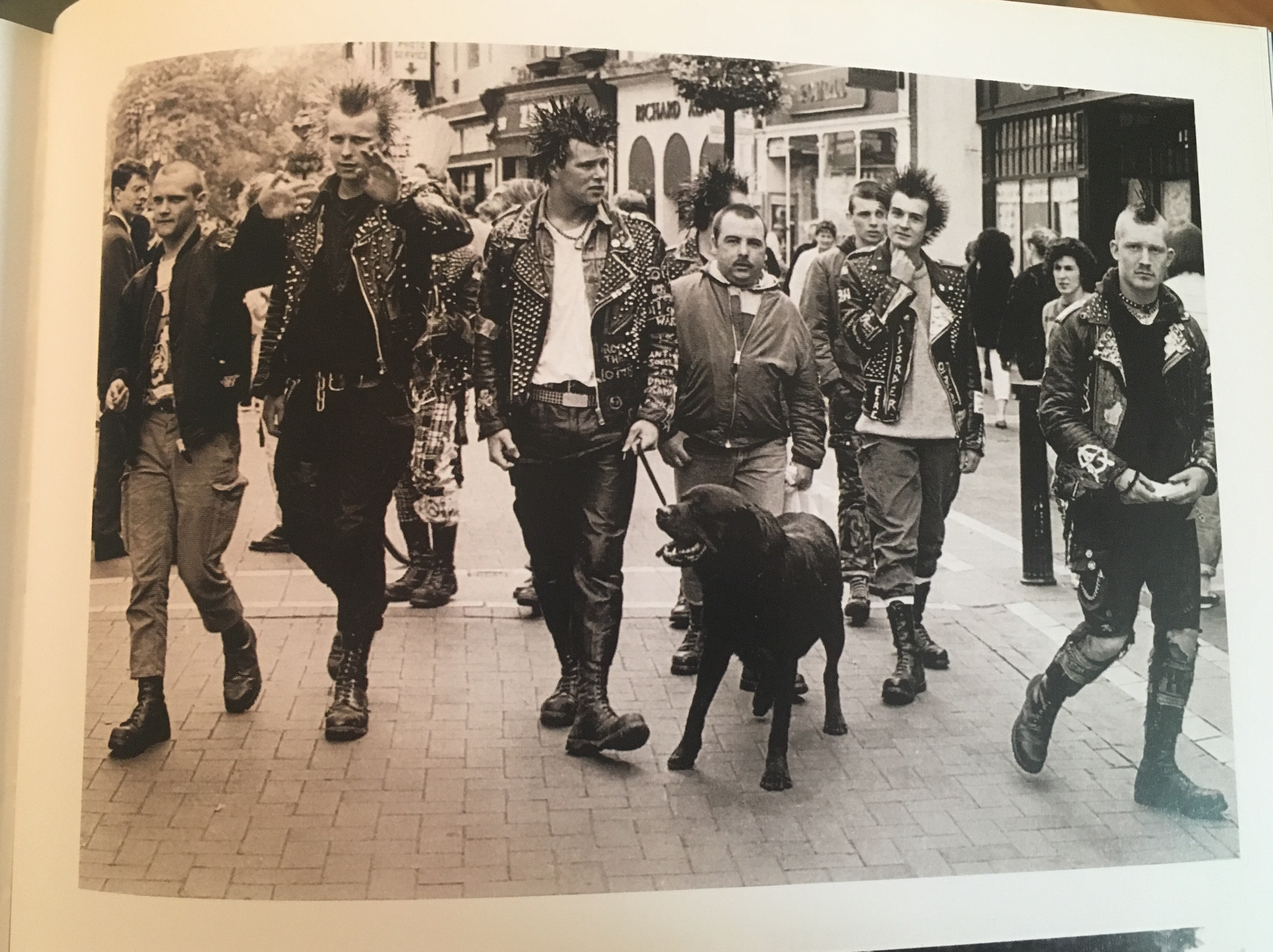
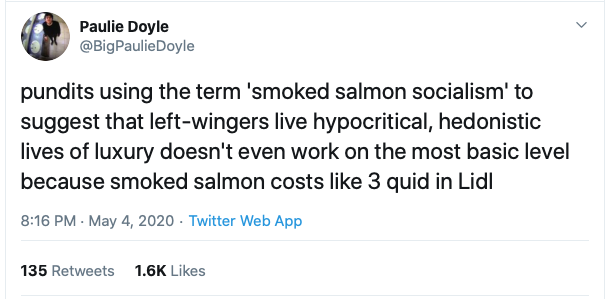
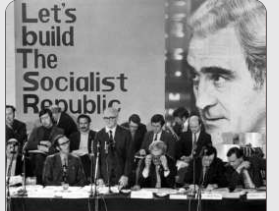 Left wing middle class university lecturers, broadcasters such as Conor Cruise O’Brien, David Thornley and Justin Keating joined Labour to the point where the leader of the Irish Labour Party could promise ‘the seventies will be socialist’, an optimistic assertion that was not borne out but provided much mirth to cynics in the decades after. This set were often objects of derision in Fianna Fáil, particularly during the 1969 general election when, under the guidance of its director of elections, the Minister for Finance, Charles Haughey, it ran a red-scare against Labour which, it warned planned to nationalise farms and industries including Guinness.
Left wing middle class university lecturers, broadcasters such as Conor Cruise O’Brien, David Thornley and Justin Keating joined Labour to the point where the leader of the Irish Labour Party could promise ‘the seventies will be socialist’, an optimistic assertion that was not borne out but provided much mirth to cynics in the decades after. This set were often objects of derision in Fianna Fáil, particularly during the 1969 general election when, under the guidance of its director of elections, the Minister for Finance, Charles Haughey, it ran a red-scare against Labour which, it warned planned to nationalise farms and industries including Guinness.
